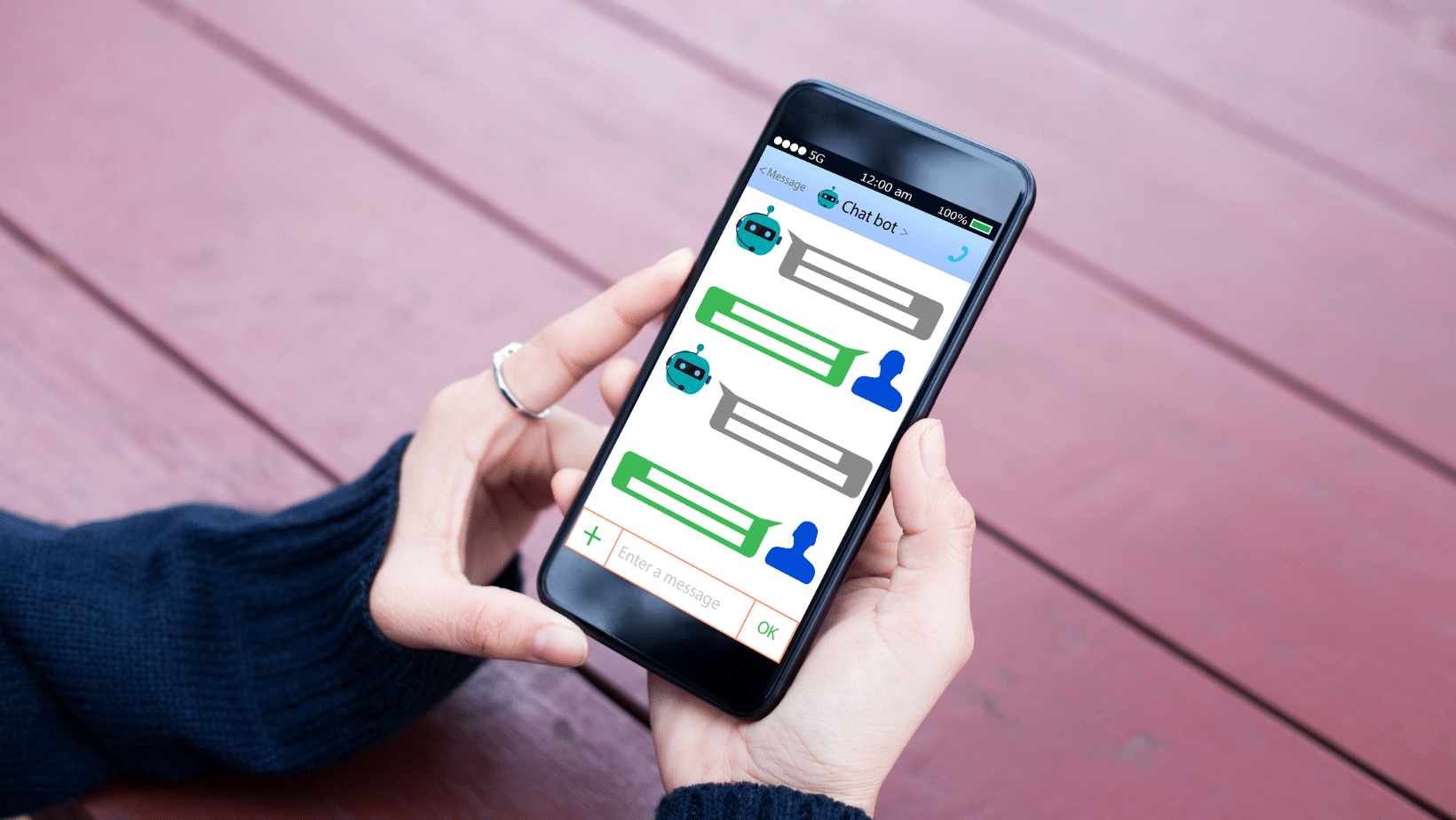
ChatGPT Is Everywhere. What Are the Implications of ChatGPT for Social Media?
Last Updated on May 11, 2023 by Valerie Jennings
With its ability to understand complex language and generate contextually relevant responses, ChatGPT is changing the way businesses and individuals engage with their audiences. In this article, we will explore the implications of ChatGPT for social media, including its impact on user experience, social media marketing and potential risks and challenges. ChatGPT has already been used by various companies, including Nike, Hilton Hotels and Dell Computers. And it’s only getting bigger and better!
What Is ChatGPT and How Do I Use It?
ChatGPT is an AI language model developed by OpenAI that uses natural language processing (NLP) to generate human-like responses to text-based prompts. It is capable of understanding complex language and generating responses that are contextually relevant and grammatically correct.
To use ChatGPT, you can simply enter your prompt or question into a chat interface or platform that supports the model. ChatGPT will then generate a response based on the input it has received. Some common use cases for ChatGPT include customer support, chatbots and language translation.
Keep in mind that ChatGPT is not perfect and can sometimes generate responses that are inaccurate or inappropriate. It is important to carefully evaluate the responses generated by ChatGPT and ensure that they align with your desired outcomes and messaging.
ChatGPT’s Social Media Connections
ChatGPT is an AI language model that can be used by businesses and organizations to interact with consumers on social media. With ChatGPT, brands can answer questions and provide support directly to customers, creating a personalized and transparent experience. This tool can be used as an extension of existing customer service programs or as a stand-alone channel for hosting live chats with customers on a regular basis.
Moreover, ChatGPT also provides opportunities for PR professionals to use it as part of their integrated communications strategy. By setting up channels for both the media and consumers, ChatGPT enables two-way communication, allowing for the sharing of ideas and collaboration on content creation. This tool can also facilitate real-time conversations with consumers, giving brands the chance to demonstrate their commitment to their customers’ best interests and build trust through transparency. Overall, ChatGPT is a powerful tool for brands to connect with consumers on social media and enhance their PR strategies.
Who Uses ChatGPT?
ChatGPT is being used by a variety of companies, including Amazon, Lyft and Walmart, to provide customers with the ability to chat with them while shopping. This tool has proven to be useful for customers who want to learn more about products and services without waiting on hold or going through an automated system.
It’s also used by celebrities like Kim Kardashian as part of their social media strategy, enabling fans to easily contact them with questions or comments about their brand or career. Journalists at major news outlets like CNN use the platform to access communities where they might not otherwise have had access to information from people directly affected by current events, such as natural disasters or political unrest.
This new tool is used by a diverse range of brands, individuals and organizations to promote their products, services and ideas. The ChatGPT platform allows users to create customized profiles to share their content with followers, making it a versatile tool for marketing, customer service and engagement.
What Are the Best Ways To Use ChatGPT in Social Media Marketing?
ChatGPT is a valuable tool for businesses looking to enhance their social media marketing efforts. Here are some of the best ways to use ChatGPT in social media marketing:
- Customer Service: ChatGPT can be used to provide real-time customer service and support on social media platforms. By using chatbots that can answer common questions and direct customers to relevant resources, businesses can improve the customer experience and reduce response times.
- Personalized Marketing: ChatGPT can also be used to provide personalized marketing experiences on social media. By using data on customer preferences and behaviors, businesses can tailor marketing messages and offers to individual customers.
- Social Listening: ChatGPT can be used to monitor social media conversations and identify trends and opportunities in real-time. By using chatbots that are designed to analyze social media data, businesses can gain insights into customer sentiment and engagement.
- Influencer Marketing: ChatGPT can also be used to facilitate influencer marketing campaigns on social media. By using chatbots that can identify and engage with influencers, businesses can leverage the power of social media influencers to promote their products or services.
- Social Media Advertising: ChatGPT can be used to create personalized social media ads that are targeted to individual customers. By using chatbots that can analyze customer data and preferences, businesses can create ads that are more likely to resonate with their target audience.
By using ChatGPT for customer service, personalized marketing, social listening, influencer marketing and social media advertising, businesses can improve the customer experience, gain valuable insights and drive engagement and revenue.
How Do I Get the Most Out of ChatGPT?
To get the most out of ChatGPT, businesses should consider several best practices. First and foremost, it’s essential to define the goals and objectives for using ChatGPT. This will help ensure that the tool is used in a way that aligns with the company’s overall marketing and customer engagement strategies. By defining goals, businesses can stay focused and maximize the effectiveness of ChatGPT.
Another important factor to consider is training the chatbots. Chatbots are the backbone of ChatGPT and they must be programmed to provide accurate and helpful responses. By investing in chatbot training, businesses can ensure that the responses and interactions provided by ChatGPT are of high quality.
Monitoring and optimizing ChatGPT’s performance is another key best practice. This may include analyzing metrics such as response times and engagement rates and making adjustments to the chatbot’s programming accordingly. By continuously monitoring and optimizing ChatGPT, businesses can improve its effectiveness over time.
Integrating ChatGPT with existing systems and processes is also critical to getting the most out of the tool. For example, businesses can integrate ChatGPT with customer relationship management (CRM) software or social media management platforms. This can help to streamline workflows and ensure that data is being shared seamlessly across different channels.
Finally, businesses should continuously innovate and explore new ways of using ChatGPT. As technology and customer expectations evolve, businesses must be prepared to adapt and experiment with new use cases, features and capabilities of the tool. By continuously innovating, businesses can stay ahead of the curve and leverage ChatGPT to enhance their customer engagement and marketing efforts.
What Is the Best Use of ChatGPT?
This powerful tool can be used for a variety of purposes, including customer service, marketing and social media engagement. However, the best use really depends on the specific needs and goals of each individual business.
One primary benefit of ChatGPT is its ability to provide real-time customer service and support. By using chatbots to handle common customer inquiries and issues, businesses can improve the customer experience and reduce response times. This can help to increase customer satisfaction and loyalty, ultimately driving revenue and growth.
ChatGPT can also be used for personalized marketing and outreach. By using data on customer preferences and behaviors, businesses can create targeted marketing messages and offers that are more likely to resonate with individual customers. This can help to increase engagement and conversions, while also improving the overall customer experience.
Another key use is social media engagement. By using chatbots to monitor social media conversations and engage with customers in real-time, businesses can build stronger relationships with their audience and increase brand awareness. This can help to create a more positive image for the brand and improve customer loyalty.
The Future of ChatGPT
The future of ChatGPT is promising for businesses looking to improve their online presence and customer relationships. By leveraging the technology’s features and capabilities, businesses can stay ahead of the curve in meeting customer expectations and achieving growth.
As more companies adopt ChatGPT, the technology will become increasingly sophisticated and capable of handling more complex tasks. This presents new opportunities for businesses to improve their customer service and social media presence, while also connecting with customers on a more personal level to build stronger relationships.
As consumers become more sophisticated and demanding, businesses must meet higher expectations for quality customer service and innovative features. ChatGPT is designed to meet these expectations, with intuitive mobile accessibility, support for multiple languages and currencies and scalability to accommodate growth without sacrificing security standards.
In summary, ChatGPT is a valuable tool for businesses and PR professionals alike and its potential uses are only just beginning to be explored. By adopting this technology and leveraging its capabilities, businesses can improve their customer service, marketing and social media engagement, ultimately driving growth and success in the digital age.




Jesse
Hi! I discovered your blog while exploring online. The information about ChatGPTs enhancing customer engagement was really useful. I got a lot of ideas from it. Thanks for the insights. I’m excited to put these tips into practice and grow my business! Also, I found another article on this subject that you might want to check out.
https://expertguru.ai/blogs/tech-insights/boosting-customer-engagement